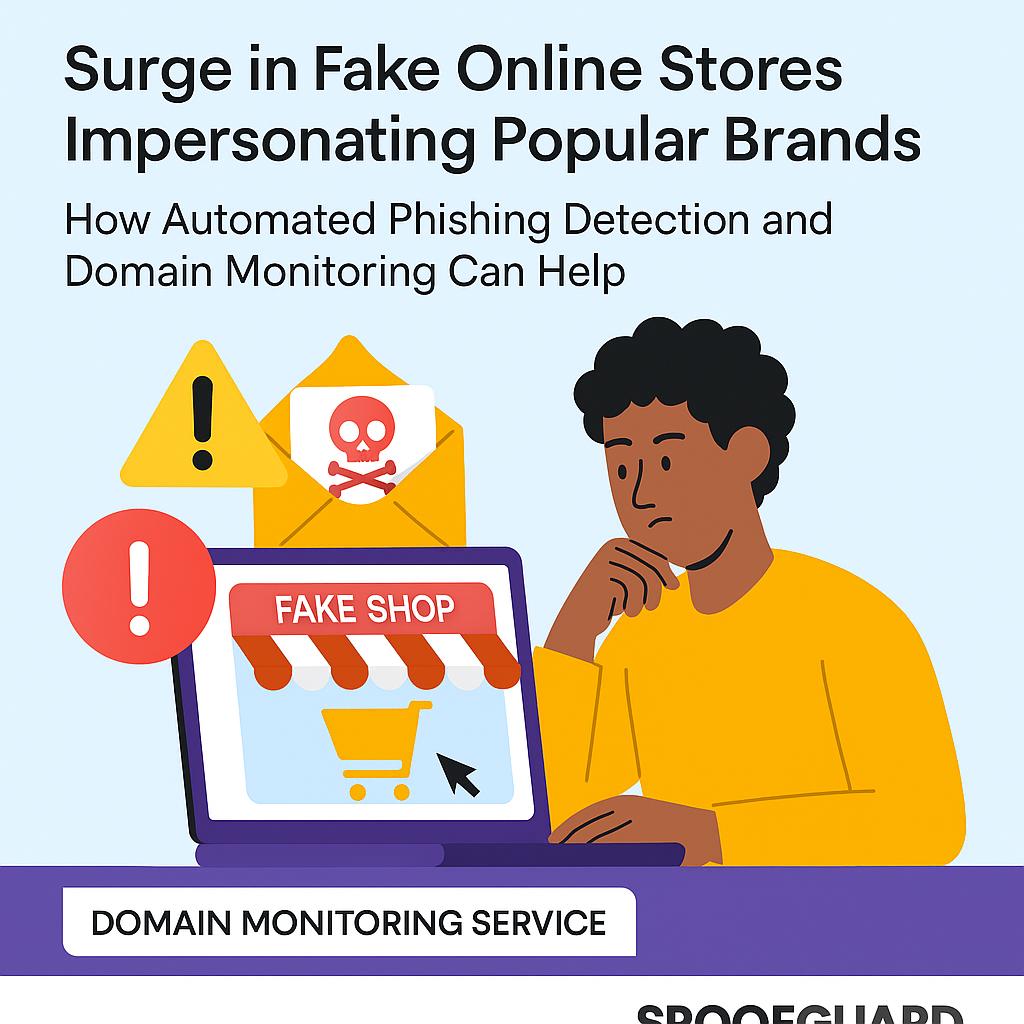Spoofing Surge Targets Global Brands: How Automated Detection and Domain Monitoring Are Fighting Back

➤Summary
In recent months, cybersecurity experts have observed a sharp rise in spoofing incidents and brand impersonation attacks targeting companies across the globe. From tech giants to mid-sized e-commerce platforms, no brand appears immune to the digital manipulation of identity. As this wave of cyber deception grows, businesses are turning to technologies like automated phishing detection and comprehensive domain monitoring services to protect their assets, their customers, and their reputations.
The New Face of Spoofing: Brand Abuse at Scale
Spoofing has evolved far beyond email scams. Today, attackers create highly convincing clones of brand websites, register typo-squatted domains, and launch sponsored ads that redirect unsuspecting users to malicious platforms. On social media, fake brand profiles lure users into sharing personal data or making fraudulent transactions.
This isn’t just a matter of reputational damage. Spoofed brands face legal exposure, drops in consumer trust, and loss of revenue. According to DarknetSearch, spoofed domains linked to phishing kits have increased by over 35% globally in 2024.
A Recent Case: Multinational Retail Chain Spoofed
In April 2024, a major European retail chain became the latest victim of a sophisticated spoofing campaign. Cybercriminals registered dozens of domains resembling the brand’s primary URL and embedded their logos and visual identity into fake checkout pages. Consumers were tricked into providing credit card information, which was then sold on dark web marketplaces.
The company reacted swiftly using an advanced domain monitoring service to identify all newly-registered lookalike domains, and deployed an automated phishing detection engine to flag clone websites. Within hours, takedown notices were issued to hosting providers, mitigating further damage.
The Technology Behind Modern Brand Protection
Platforms like SpoofGuard are at the forefront of this technological response. By combining real-time data scraping, DNS monitoring, AI-driven image recognition, and phishing behavior detection, they offer businesses a powerful solution against evolving spoofing tactics.
- Automated phishing detection scans thousands of sites, emails, and DNS records for suspicious activity.
- Domain monitoring services constantly compare new registrations with known brand terms, alerting businesses to potential threats.
- Custom rule engines allow companies to tailor responses based on industry, geography, and risk level.
Why Brands Are Especially Vulnerable
Brand equity is more than just logos and colors. It’s the trust consumers place in a name. Spoofing campaigns exploit this trust. Companies that delay investing in defensive tools are particularly exposed. Often, it’s not until customers report issues that a company realizes its brand has been cloned or misused.
With the proliferation of AI-generated content, it has become even easier for cybercriminals to replicate marketing materials and simulate genuine online interactions. This increases the urgency for automated phishing detection, as traditional manual monitoring methods are no longer sufficient.
SpoofGuard: A Real-Time Line of Defense
SpoofGuard offers a robust suite of features tailored to modern threats:
- Screenshot capture of suspicious domains.
- Real-time alerts with brand logo misuse detection.
- Takedown request automation to ISPs and DNS providers.
- A centralized dashboard for threat intelligence and investigation.
These tools allow businesses to not only respond faster, but to predict and prevent abuse before it reaches the consumer.
Learn more about SpoofGuard’s mission and services here: About Us
The Role of Domain Monitoring in Reputation Management
Once a domain resembling your brand is registered, every hour counts. Delay in detection can lead to:
- Phishing campaigns reaching your customers.
- SEO dilution from duplicate sites.
- Brand erosion from public trust breaches.
A domain monitoring service scans TLDs (.com, .net, .biz, etc.) as well as regional and international variants. Alerts can be set for certain keywords, logos, or even site language to detect geo-targeted spoofing attempts.
Government and Regulatory Response
As spoofing tactics evolve, governments and agencies are implementing stricter policies. In the EU and U.S., new digital trust frameworks are being developed, but enforcement remains slow. Businesses must remain proactive with their cybersecurity investments.
What Companies Should Do Today
- Deploy an automated phishing detection system.
- Integrate a real-time domain monitoring service.
- Register domain name variations to prevent typosquatting.
- Train staff and customers on spotting spoofing.
- Monitor social media for unauthorized brand use.
Cybersecurity must now be seen as an extension of brand management.
Final Thoughts
Spoofing and brand abuse are no longer isolated threats; they are systemic and growing. Every organization that values its brand integrity must prioritize automated phishing detection and implement a reliable domain monitoring service.
Solutions like SpoofGuard provide a scalable and intelligent defense system that protects both businesses and their audiences in an era of digital uncertainty.
SpoofGuard detects domain impersonation and phishing threats in real time. Don’t wait until damage is done.
Request a demo →